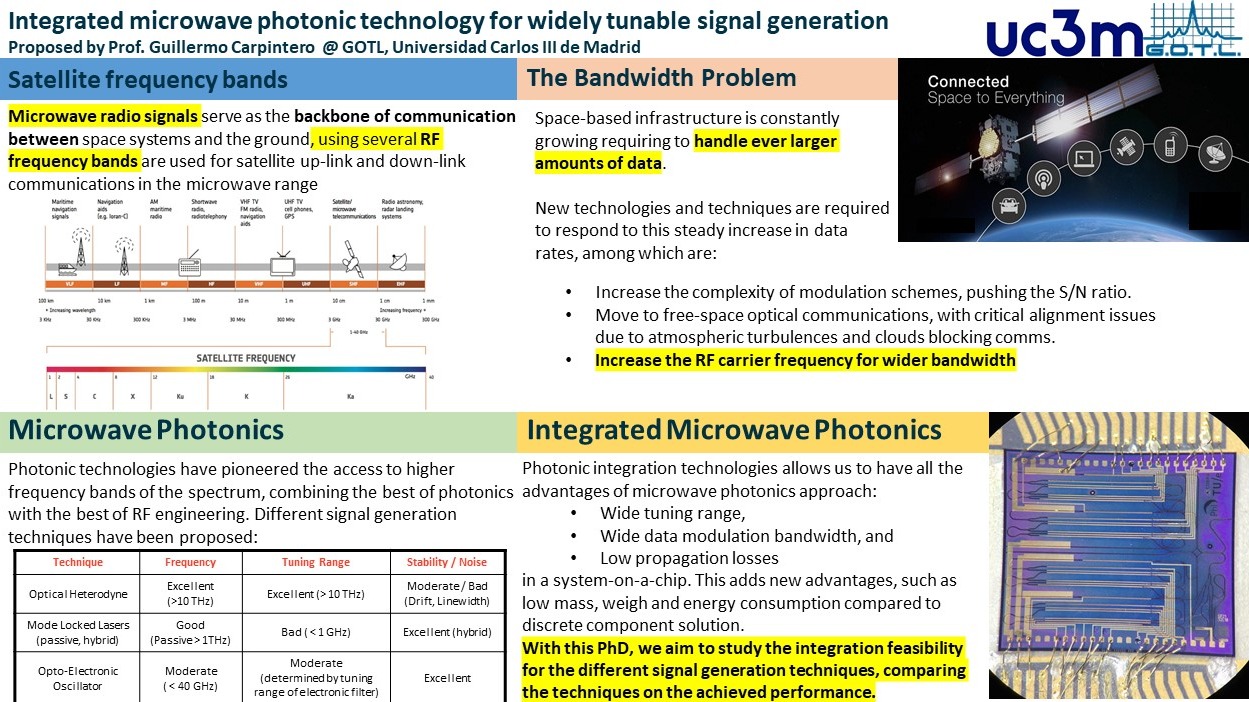Microwave Photonics (MWP) combines the best of photonic and radiofrequency engineering. Different signal generation techniques have been demonstrated with discrete components connected through fiber, being the sensitivity to ambient factors a key drawback. Photonic integration is providing greater stability, reduced size and mass by integrating the system on a single chip. Optical heterodyne technique is useful for the generation of high frequency electrical signals requiring two optical wavelengths and a photomixer. The wavelength tuning range and tuning speed with semiconductor lasers make this signal generation technique a good solution where frequency flexibility is requested. In this project we will compare three different schemes to implement an integrated MWP optical heterodyne signal generation technique: 1-Dual laser: based on two independent lasers emitting a single wavelength each, with the wavelength spacing being the desired RF frequency. The main weakness is the phase noise of the generated beat-note that is significantly larger than purely electrical sources, requiring external phase noise reduction system. 2-Filtered optical frequency comb (OFC): OFC based on a mode-locked laser followed by an integrated optical filter to select two modes of the OFC, which are phase correlated, reducing the phase noise of the generated beat-note. 3-Optical modulation: based on a semiconductor laser followed by an optical modulator, set at the minimum bias transmission point and driven by an external RF synthesizer. The suppressed-carrier dual-sideband modulation generates an optical heterodyne signal with phase noise determined by the RF synthesizer. These techniques will be characterized and compared against the following figures of merit: maximum frequency, tuning range, capacity to synchronize to a local oscillator, phase noise and long-term drift. The outcome is the development of a photonic device prototype and documentation with the comparison results.

